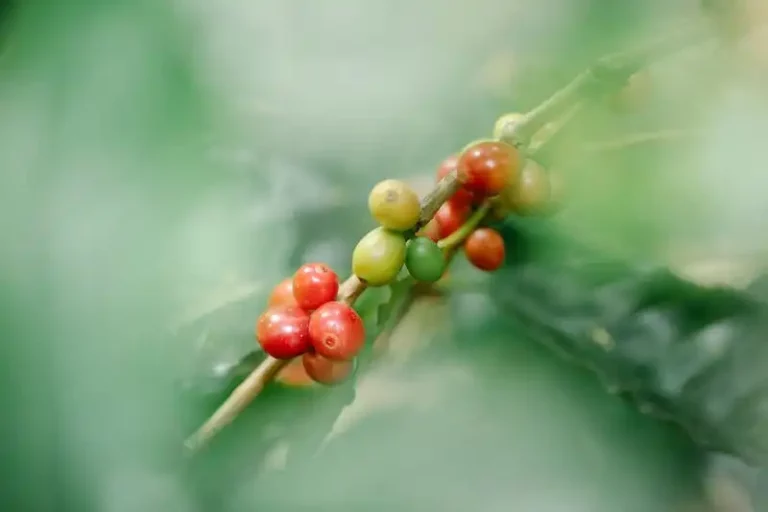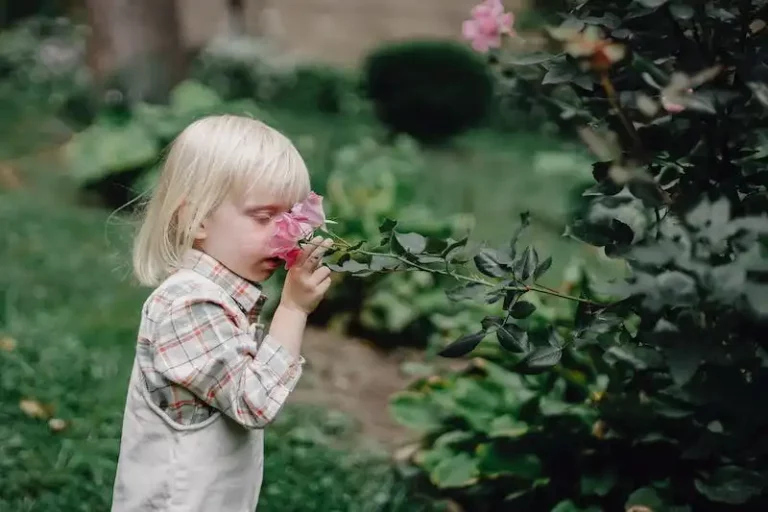Seedlings are commonly used to grow corn, as they provide the best results. Corn seeds need warm soil, so summertime is the ideal time for planting. The plants are usually mature and ready for harvest before the first frost.
When growing corn seedlings, containers are often used, making it easy to grow homegrown corn in small spaces. Just make sure to choose the right varieties that are suitable for container gardening.
Before propagating or sowing corn seeds, it is important to glance at the instructions on the seed packet. Some varieties have specific germination and growing requirements, so following the guidelines is necessary for success.
Corn seedlings can be susceptible to various pests, such as armyworms and mosaic. Therefore, it is essential to keep an eye out for any signs of pests and take appropriate measures to control them.
When it comes to fertilizing corn seedlings, it is best to follow the “less is more” approach. Applying excessive amounts of fertilizer can cause harm to the plants. It is recommended to fertilize according to a calendar or a fertilizing schedule.
The best way to determine when corn seedlings are ready to harvest is by observing the color of the silks. Once the silks have turned brown and dried up, it is time to harvest the corn. Fresh ears of corn are best enjoyed above all else when they are milky, tender, and sweet.
There are some considerations to keep in mind when growing corn seedlings. Planting in early spring, after the soil has warmed up, generally yields the best results. Additionally, ensuring the right spacing between plants allows for optimal growth and a higher yield.
In conclusion, growing corn seedlings at home can be a rewarding experience. With the right care and attention, you can enjoy delicious, homegrown corn right from your own backyard.
Sweet Corn Seed Starting Tips
If you’re looking to grow your own sweet corn, starting seeds indoors is a great way to get a head start. Here are some tips to help you successfully start your sweet corn seeds:
Choosing Varieties: There are many different varieties of sweet corn to choose from, including those that are commonly recommended for homegrown gardens. When selecting a variety, consider your growing zone and the type of corn you prefer. Some varieties are more suitable for warmer climates, while others are better suited for cooler temperatures.
Starting Containers: You can start your sweet corn seeds in small individual containers or in trays with separate cells. Either way, make sure the containers have drainage holes to prevent waterlogged roots. Also, opt for containers that are at least 2-3 inches deep to provide enough space for the young corn seedlings.
Sowing the Seeds: Place one seed in each container, about 1 inch deep. Sweet corn seeds are sensitive to cold temperatures, so make sure the surrounding temperature is at least 50 degrees Fahrenheit before sowing. Keep a calendar handy to track the dates, as sweet corn typically takes around 70-90 days to mature.
Providing Light: Corn needs a lot of sunlight to grow well, so place your containers in a sunny spot in your kitchen or near a window. If you don’t have access to natural sunlight, you can use grow lights to provide the necessary light intensity.
Watering: Sweet corn requires regular watering to keep the soil consistently moist. However, avoid over-watering, as this can lead to root rot. Water the corn seedlings until you see water draining out of the drainage holes, and then allow the soil to dry slightly before watering again.
Fertilizing: Sweet corn has high nutrient needs, especially for nitrogen, phosphorus, and potassium. To ensure proper growth, consider using a balanced fertilizer designed for vegetables. Follow the instructions on the package for the best results.
Maintaining Space: Sweet corn stalks can grow quite tall (up to 6-8 feet), so make sure to provide enough space between the plants. Plant them in rows with at least 12-18 inches of space between each stalk.
Protecting Against Pests and Diseases: Armyworms and corn earworms are very common pests that can damage sweet corn. To prevent them, consider using organic pesticides or practicing natural pest control methods. It’s also important to be aware of common corn diseases, such as corn plug and mosaic virus, and take necessary precautions to prevent their spread.
Harvesting: Sweet corn is best harvested when the kernels are milky and tender. Check the maturity instructions for the specific variety you’re growing, as different types have varying harvesting needs. To check if the corn is ready, peel back the husk and press a kernel with your fingernail. If a milky liquid is released, the corn is ready to be harvested.
By following these tips, you’ll increase your chances of successfully growing sweet corn at home. And there’s nothing quite like the taste of fresh, homegrown corn on the cob!
Corn planting details
When it comes to planting corn, there are a few important details that growers should keep in mind. Here are some instructions on how to plant corn effectively:
Firstly, choose a good location for your corn seeds. Corn plants thrive in warm weather, so it’s best to plant them after the danger of frost has passed. This is commonly when the soil has warmed up to a temperature of around 50 degrees Fahrenheit (10 degrees Celsius).
Next, consider the spacing of your corn plants. It’s recommended to plant the seeds about 1 inch (2.5 centimeters) deep and 4 to 6 inches (10 to 15 centimeters) apart in rows that are about 30 inches (76 centimeters) apart. This allows the corn plants to grow well and provides them with enough space for proper development.
It’s also important to fertilize your corn plants. Corn is a heavy feeder and requires a lot of nutrients to grow properly. Many growers prefer to use a balanced fertilizer, such as a 10-10-10 blend, to provide their corn plants with the necessary nutrients.
Another key detail is watering your corn plants. They need regular watering, especially during dry spells. It’s generally recommended to provide them with about 1 inch (2.5 centimeters) of water per week, either through rainfall or irrigation.
As for potential hazards, corn plants can be susceptible to pests like armyworms that can damage the crop. It’s important to monitor your plants regularly and take appropriate action if you notice any signs of pest infestations.
When it comes to harvesting, sweet corn is best picked when the kernels are in the milky stage. This is the stage when the corn is at its most delicious and tender. Simply twist the ears downward and they should detach easily from the stalk.
Overall, by following these details and instructions, you’ll have a good chance of successfully growing your own corn. Whether you’re growing it for fresh consumption or as a source of grain, corn is a versatile crop that can be enjoyed in many different ways.
Corn Sowing and Planting Tips
Corn, a staple and delicious crop for many homegrown enthusiasts, can be a rewarding plant to grow in your garden. However, there are some important considerations and tips to keep in mind when sowing and planting corn seedlings. Let’s learn more about them.
Sowing Corn Seeds:
When sowing corn seeds, timing is crucial. Wait until the soil has warmed to a temperature of at least 50 degrees Fahrenheit (10 degrees Celsius). Corn is sensitive to frost, so be sure to check your local frost dates and sow your seeds accordingly.
Planting Corn Seedlings:
Before you plant your corn seedlings, it’s important to prepare the soil properly. Corn plants require a nutrient-rich soil, so consider fertilizing it with potassium and other nutrients based on your soil test results. Dig deep holes or use a planting tool to make sure the seedlings have enough space to grow properly.
Containers:
If you’re starting your corn seedlings in containers, be sure to use large pots or trays. Corn seedlings have long roots, so they need enough space to grow. Make sure the containers have drainage holes to avoid waterlogging.
Planting Depth:
When planting your corn seedlings, make sure to dig deep enough to cover the roots. A general guideline is to plant the seedlings about 1-2 inches deep.
Watering Needs:
Corn plants require consistent watering, especially during dry periods. Keep the soil moist but not waterlogged. Water deeply once or twice a week, depending on the weather conditions.
Potential Diseases and Pests:
There are several diseases and pests that can affect corn plants. Some of the most common are corn earworms, stalk borers, and southern corn leaf blight. To prevent and control these issues, consider using recommended pest control methods and planting disease-resistant corn varieties.
Harvesting:
Knowing when to harvest your corn is crucial. Look for signs such as fully developed husks and silks that have dried out. The ears should feel full and the kernels should be plump. Harvest your corn when it’s fully grown but still tender and sweet for the best flavor.
Additional Tips:
Here are a few additional tips to ensure successful corn growing:
- Space your corn plants properly to allow for good air circulation.
- Consider planting corn in blocks rather than single rows to improve pollination.
- Provide support for taller varieties by using stakes or trellises.
- Rotate your corn crops each year to prevent diseases and nutrient depletion in the soil.
- Consider planting corn varieties that are suitable for your hardiness zone and local climate.
Following these corn sowing and planting tips will make it easier for you to grow healthy and productive corn plants in your garden. Enjoy the taste of your homegrown corn and impress your friends and family with delicious corn on the barbecue!




